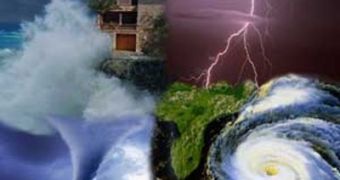Only yesterday, the US Environmental Protection Agency (EPA) announced that it had decided to present researchers working with the Massachusetts Institute of Technology (MIT) with a $750,000 (€601,361/ ₤474,762) grant.
The end goal of this funding is that of developing new ways of dealing with the changes in terms of weather conditions brought about by phenomena such as global warming.
Thus, MIT researchers are to focus on identifying new means of predicting how and why various extreme weather manifestations will impact on air and water quality, something that will allow authorities to take appropriate measure and counteract these problems before they even begin to emerge.
EPA's official website informs us that MIT scientists are not the only ones to benefit from such funding.
More precisely, the organization intends to sponsor 14 such projects across the entire US territory, which will eventually amount to a total of $9 million (roughly €7,21 million / ₤5,69 million) being invested in environmental research.
In order to ensure that this money is spent with maximum efficiency, MIT specialists are to work closely together with researchers at the US National Center for Atmospheric Research, the Colorado State University and the North Carolina State University.
Hopefully, their bouncing ideas and opinions back and forth will yield better results than simply allowing the MIT scientists to work on their own would have.
Commenting on these projects, Curt Spalding from EPA, New England, made a case of how, “We need to know how changes in weather and extreme weather events will affect the quality of our air and water.”
Furthermore, “Grants like the one EPA awarded to MIT furthers research that can help us understand the impact of such weather on our natural resources as well as our built environment. In turn, the information can help us take steps to reduce the harmful impact on our communities brought by extreme weather events.”

 14 DAY TRIAL //
14 DAY TRIAL //